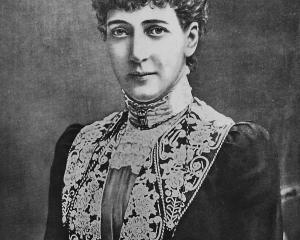
Stefansson is credited with the discovery of the light-skinned natives far up on Canada’s Arctic rim. He found the tribe in 1908, while commanding an expedition fitted out by the Canadian Government and the American Museum of Natural History. The party penetrated into the white lands, marked ‘‘uninhabited’’ on the maps, far east of the Mackenzie River, and in 1910, on Coronation Gulf, found Eskimos who had never seen white men from the outside world. According to Stefansson, they numbered probably 2000. Unlike their dark-hued brothers of Alaska, they had white skin, many had red hair, and men wore full beards, and all had light eyebrows. News of the discovery was brought back by Stefansson in 1912. In 1913 he set out again for the north on the trip he is now bringing to a close. From Lepetich’s statement, it is believed that Stefansson during the last two years made another trip to the land of these little-known natives.
Ancestry of dog breeds
According to Charles R. Eastman, writing in the Museum Journal, our modern dogs have a varied ancestry, some being descended from Asiatic and some from African species.
The spitz in all its varieties is a domesticated jackal. The mastiff and St. Bernard and their kind are descended through the molossums of the Romans from a huge, wolflike creature that was already domesticated by the Assyro-Babylonians 3000 years before our era.
The Russian borzoi and the Sicilian hound had their origin in the Cretan hound, which is still common in Crete, and it and its cousin, the Ibaza hound of the Balearic Islands, came from the ancient Ethiopian hound, which was a domesticated wolf. The collie or shepherd dog seems to come down direct from a small wild dog of the paleolithic period.
Girls emigrating
At a Y.M.C.A. hut in Central London, where many girl war workers had gathered together, the subject of where they would go after the war was discussed. There seemed to be but one opinion. They would go overseas. A land-girl said she would go to New Zealand; a shipping clerk said: ‘‘I have had a good commercial training; I am off to America.’’ Of several W.A.A.C.’s, two signallers were going to Australia; three clerks to ‘‘any of our overseas dominions’’; a forewoman cook chose Australia; and one girl said she had ‘‘heard of a girl in a factory who meant to go back to domestic service’’.
Raining fish
During a thunderstorm which took place at Sunderland (England), a rain of fish occurred in the Hendon district. The area covered included parts of several streets, within a radius of about 100 yards. The fish lay from 20 to 30 to the square yard, and were of a kind locally known as "sile," being in shape like a small eel, and varying in length from two to three inches. — ODT, 13.01.1919
• COPIES OF PICTURE AVAILABLE FROM ODT FRONT OFFICE, LOWER STUART ST, OR WWW.OTAGOIMAGES.CO.NZ











